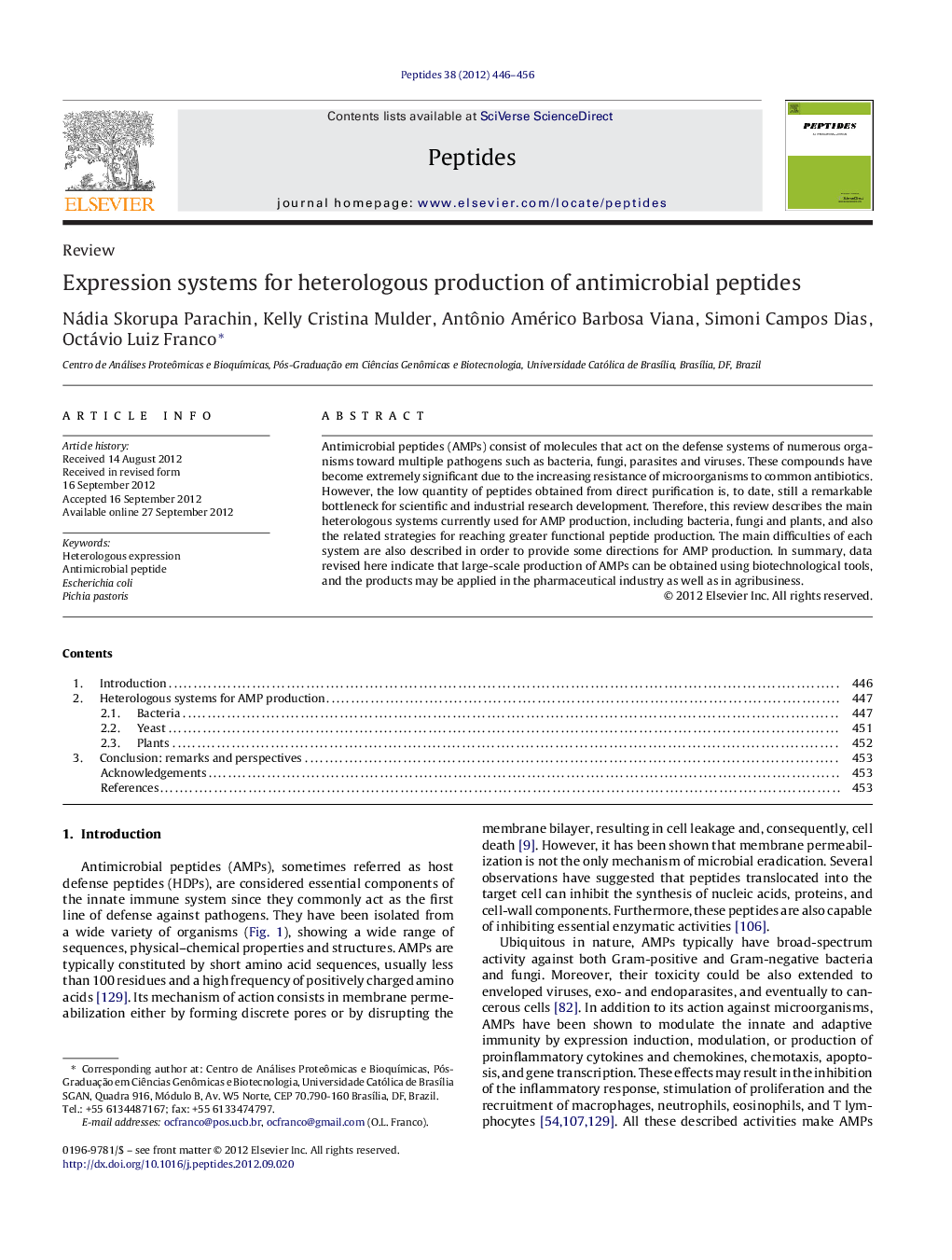| Article ID | Journal | Published Year | Pages | File Type |
|---|---|---|---|---|
| 2006269 | Peptides | 2012 | 11 Pages |
Antimicrobial peptides (AMPs) consist of molecules that act on the defense systems of numerous organisms toward multiple pathogens such as bacteria, fungi, parasites and viruses. These compounds have become extremely significant due to the increasing resistance of microorganisms to common antibiotics. However, the low quantity of peptides obtained from direct purification is, to date, still a remarkable bottleneck for scientific and industrial research development. Therefore, this review describes the main heterologous systems currently used for AMP production, including bacteria, fungi and plants, and also the related strategies for reaching greater functional peptide production. The main difficulties of each system are also described in order to provide some directions for AMP production. In summary, data revised here indicate that large-scale production of AMPs can be obtained using biotechnological tools, and the products may be applied in the pharmaceutical industry as well as in agribusiness.
Graphical abstractFigure optionsDownload full-size imageDownload as PowerPoint slideHighlights► This review describes the main heterologous systems currently used for AMPs production. ► Strategies for reaching a higher functional peptide production were focused. ► Data revised indicates the challenges of large-scale production of AMPs.
